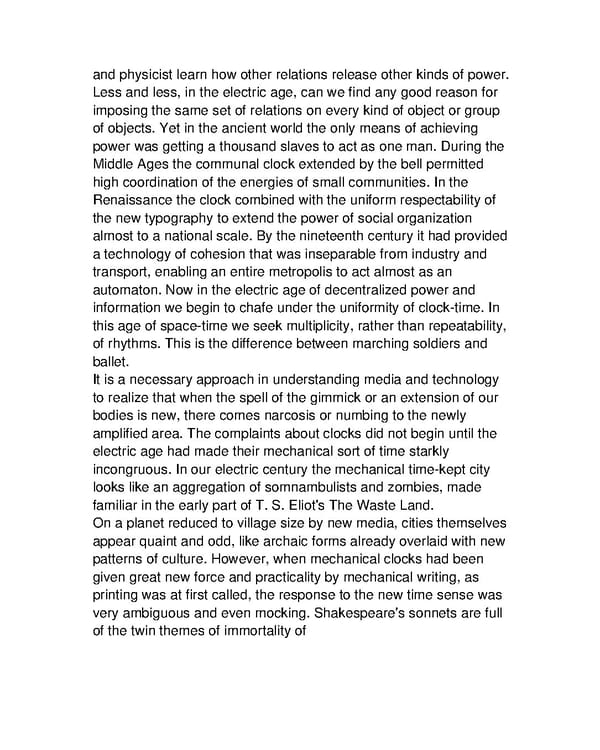and physicist learn how other relations release other kinds of power. Less and less, in the electric age, can we find any good reason for imposing the same set of relations on every kind of object or group of objects. Yet in the ancient world the only means of achieving power was getting a thousand slaves to act as one man. During the Middle Ages the communal clock extended by the bell permitted high coordination of the energies of small communities. In the Renaissance the clock combined with the uniform respectability of the new typography to extend the power of social organization almost to a national scale. By the nineteenth century it had provided a technology of cohesion that was inseparable from industry and transport, enabling an entire metropolis to act almost as an automaton. Now in the electric age of decentralized power and information we begin to chafe under the uniformity of clock-time. In this age of space-time we seek multiplicity, rather than repeatability, of rhythms. This is the difference between marching soldiers and ballet. It is a necessary approach in understanding media and technology to realize that when the spell of the gimmick or an extension of our bodies is new, there comes narcosis or numbing to the newly amplified area. The complaints about clocks did not begin until the electric age had made their mechanical sort of time starkly incongruous. In our electric century the mechanical time-kept city looks like an aggregation of somnambulists and zombies, made familiar in the early part of T. S. Eliot's The Waste Land. On a planet reduced to village size by new media, cities themselves appear quaint and odd, like archaic forms already overlaid with new patterns of culture. However, when mechanical clocks had been given great new force and practicality by mechanical writing, as printing was at first called, the response to the new time sense was very ambiguous and even mocking. Shakespeare's sonnets are full of the twin themes of immortality of
 Understanding Media by Marshall McLuhan Page 165 Page 167
Understanding Media by Marshall McLuhan Page 165 Page 167